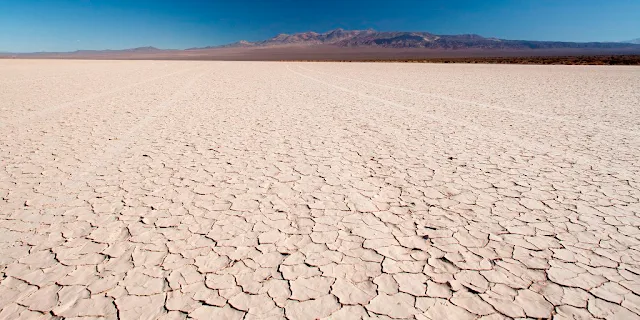The Earth's Crust Is Getting Thinner Than Ever Before
 |
| Pawel Toczynski via Getty Images |
If you looked back at Earth 170 million years ago, you’d find a very different planet. The world’s continents were all linked up into one vast 'supercontinent' called Pangaea, and according to a new study, the outermost layer of the planet was 1.7 km (1 mile) thicker than it is today.
Researchers have found that since the break-up of Pangaea, Earth’s inner mantle has been cooling twice as fast as we thought, and it looks like its crust has been thinning out ever since.
"It’s important to note [that] Earth seems to be cooling a lot faster now than it has been over its lifetime," says geophysicist Van Avendonk from the University of Texas.
"The current state of Earth, where we have a lot of plate tectonic events, this allows Earth to cool much more efficiently than it did in the past."
To be clear, when we say Earth has been cooling at an unprecedented rate over the past 170 million years, we’re not talking about the climate, which has definitely not been cooling.
To trace the changes in Earth’s outer layer over the past 2.5 billion years, they analysed 234 measurements of crust thickness from around the world over a number of geological ages.
They found that oceanic crust formed in the mid-Jurassic 170 million years ago was 1.7 km (1 mile) thicker than the crust that’s being produced today, and since then, the mantle below has been cooling much more rapidly than expected.
So why is Earth’s crust thinning out?
The outermost crust of Earth is formed by the mantle, which sits between the scorching hot core and the crust, spanning some 2,900 km (1,802 miles), and making up a whopping 84 percent of the planet's total volume.Magma produced in the mantle forms the outer oceanic crust when it rises to the surface and cools into rock.
Based on chemical analyses of lava rocks, Avendonk and his team found that since about 2.5 billion years ago, the mantle has been cooling at a rate of 6 to 11 degrees Celsius every 100 million years.
But then something happened around 170 million years ago to bump that cooling rate up to as much as 20 degrees per 100 million years ever since.
"While scientists expected the mantle to cool over time as heat left over from Earth’s formation and from radioactive decay dissipates, this degree of cooling was surprising," Thomas Sumner explains for Science News.
One of the biggest changes to Earth's plates occurred from 200 to 170 million years ago, when Pangaea split apart and eventually formed the separated continents we know today, and it looks like this spread led to everything cooling down.
"What we think is happening is that the supercontinent was like an insulating blanket," Van Avendonk explains in a press release.
"So when these continents started opening up and the deeper mantle was exposed, more or less, to the atmosphere and the ocean it started cooling much faster."
It's thought that the way Earth's tectonic plates sink, shift, and form during significant eras of change like the gradual break-up of Pangaea shifts heat in the planet's interior, affecting how it cools in certain areas.
"While mantle temperatures below the Pacific Ocean have decreased around 13 degrees per 100 million years, the mantle below the Atlantic and Indian oceans has cooled about 37 degrees per 100 million years," Sumner reports for Science News.
This difference appears to be linked to the oceans' distance from the continents.
The study could not only explain why Earth's crust appears to be getting thinner with age - it could also explain why Pangaea split up in the first place: all the heat below that giant 'insulating blanket' might have eventually broke through and split the landmass apart.
"This could explain why you get a breakup about 100 million years after you get a supercontinent assembled," Laurent Montési, a geodynamicist at the University of Maryland in College Park, who wasn't involved in the study, told Sumner.
The research has been published in Nature Geosciences.

%20(1).webp)






